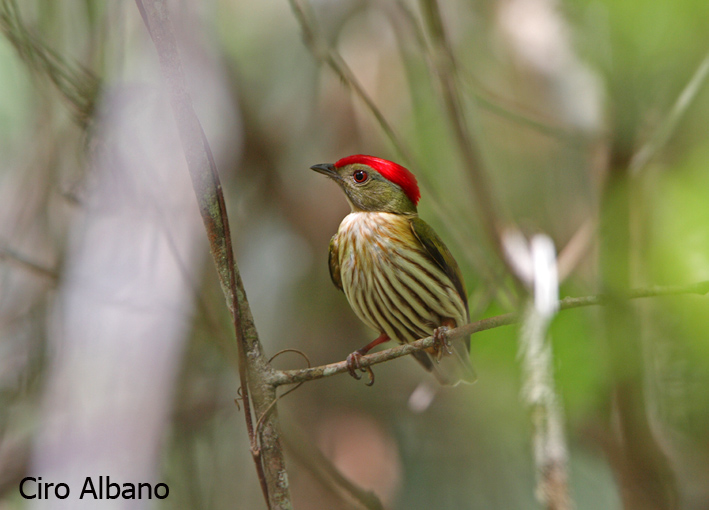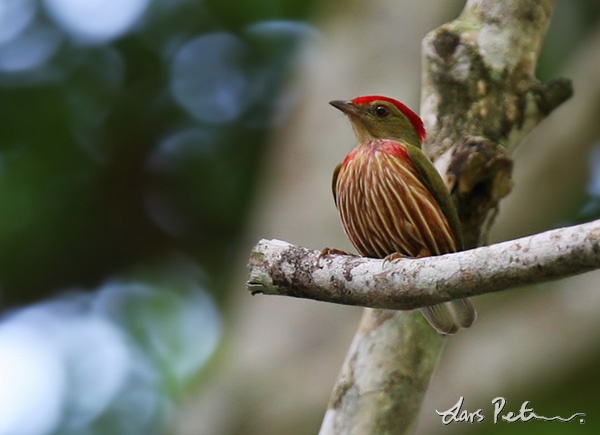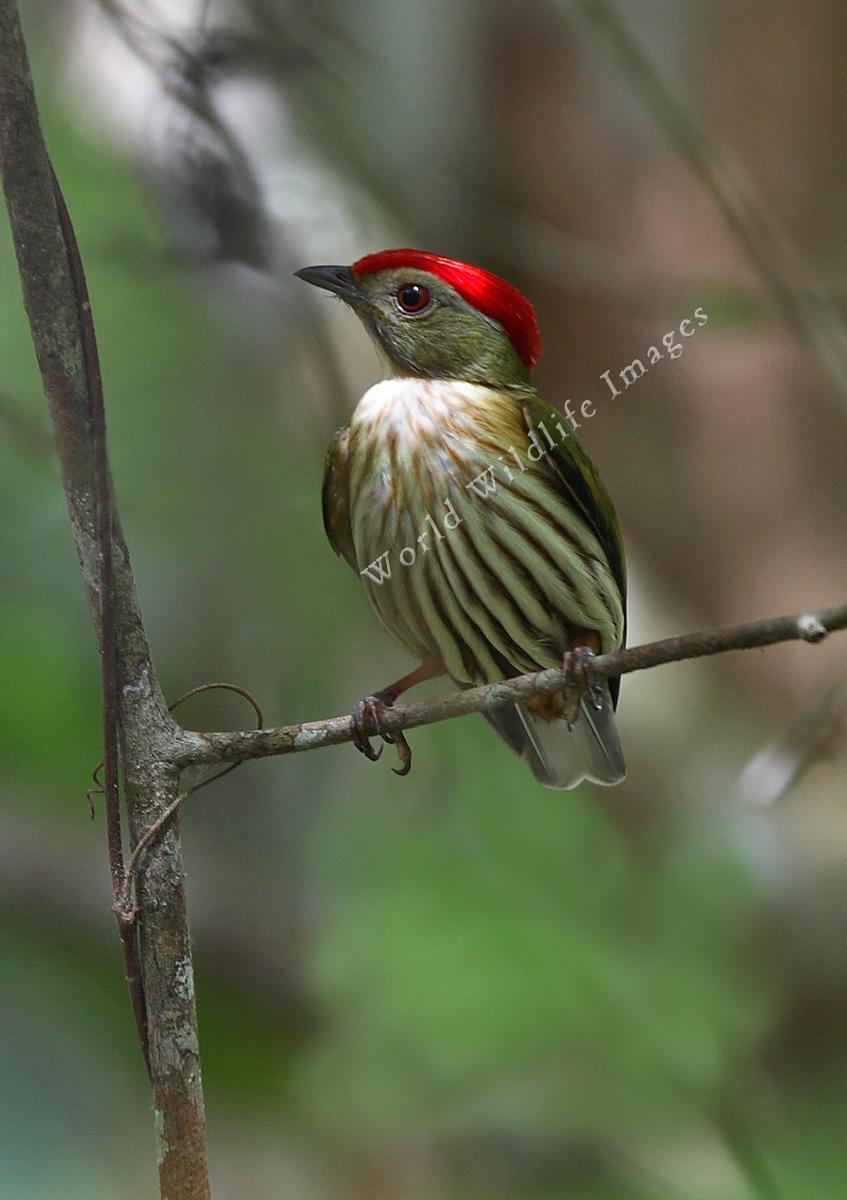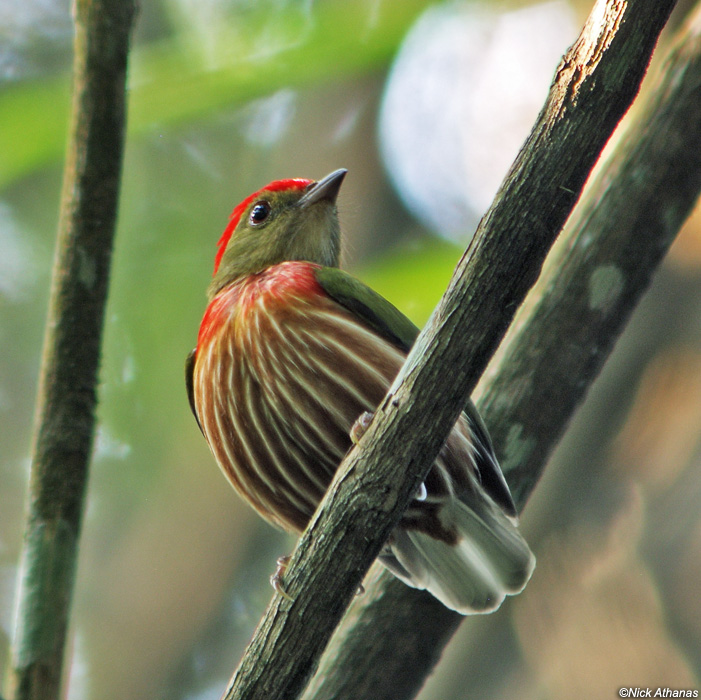
Machaeropterus regulus
SUBFAMILY
Piprinae
TAXONOMY
Machaeropterus regulus Hahn, 1819.
OTHER COMMON NAMES
French: Manakin rubis; German: Streifenpipra; Spanish: Manaquin
Franjeado.
PHYSICAL CHARACTERISTICS
Sexes differ, but not as markedly as in other manakins. Length
is 3.5–3.7 in (9–9.5 cm). The male is olive above with a shiny
red crown and nape, and the underparts are streaked reddish
brown and white. The female is plain olive above with some
reddish brown streaking below. In both sexes the iris is dark
red, and the legs purplish flesh.
DISTRIBUTION
Colombia, Venezuela, Ecuador, Peru, Brazil.
HABITAT
Understory of the interior of humid forest.
BEHAVIOR
Difficult to see, they travel alone or in pairs. Communal displays
and noticeable lekking have not been recorded. Males
have been recorded clinging to a horizontal perch with their
feet, while hanging upside down and rocking to and fro while
making buzzing sounds with their wings. Vocalizations are
weak, hummingbird-like “chips.”
FEEDING ECOLOGY AND DIET
Small fruits and insects are taken during quick, sallying flights.
REPRODUCTIVE BIOLOGY
Unknown.
CONSERVATION STATUS
Not threatened. Uncommon to fairly common in localized areas
of humid forest.
SIGNIFICANCE TO HUMANS
None known.
Photo Gallery of - Striped manakin




 Animalia Life
Animalia Life